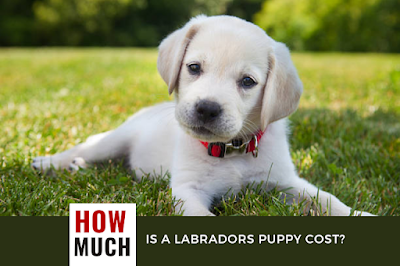As a pet owner, you care deeply about your dog's well-being, and that includes their paws. Your dog's paws are essential for mobility, balance, and overall comfort. In this article, we will explore the characteristics of healthy dog paws and how to identify signs of paw health issues. By understanding the difference between healthy and unhealthy paws, you can take proactive steps to keep your four-legged companion happy and free from pain.
1. What Do Healthy Dog Paws Look Like?
Healthy dog paws exhibit certain characteristics that indicate their well-being. Here's what you should look for healthy dog paws:
1. Moist but not excessively sweaty paws
2. Soft and smooth paw pads
3. Firm and intact nails of an appropriate length
4. Pink or black paw pads (depending on your dog's breed)
5. No visible swelling, redness, or cuts
When your dog's paws meet these criteria, it's a good sign that their paws are in good health.
2. Signs of Unhealthy Dog Paws
Recognizing the signs of unhealthy dog paws is crucial for early intervention. Keep an eye out for the following signs of unhealthy dog paws:
1. Dry, cracked, or excessively rough paw pads
2. Sores, blisters, or open wounds on the paws
4. Limping or favoring a specific paw
5. Changes in gait or balance
6. An Excessive licking or chewing of the paws
If you notice any of these signs, it's important to investigate further and take appropriate action to address the underlying issue.
3. Common Paw Problems and Causes For Healthy Dog Paws vs. Unhealthy
Dog paw issues and their causes can range widely. These typical problems and their root causes are:
1. Cracked Paw Pads: Dry and cold weather, exposure to rough surfaces, or lack of moisture can lead to cracked paw pads.
2. Paw Pad Burns: Walking on hot pavement or coming into contact with chemicals can cause burns on the paw pads.
3. Nail Issues: Overgrown nails, ingrown nails, or nails that are too short can cause discomfort and pain.
4. Paw Allergies: Allergies to certain substances, such as pollen or certain materials, can lead to paw irritation and itching.
5. Paw Infections: Bacteria, fungi, or foreign objects can cause infections in the paw pads or between the toes.
Understanding the causes behind these issues can help you prevent them and take appropriate measures to address them promptly.
4. Caring for Healthy Dog Paws
Maintaining healthy feet is essential to your dog's overall well-being. Here are some key practices to keep in mind on dog paws:
1. Proper foot hygiene
Regular cleaning of the dog's paws helps to remove dirt, debris and potential irritants. Use a damp cloth or pet wipes to gently wipe the feet, paying attention to the areas between the toes and pads of the feet.
2. Regular foot checks
Get into the habit of checking your dog's paws regularly. Look for signs of injury, swelling or abnormalities. Early detection can prevent small problems from becoming large ones.
3. Nail clipping
Keeping your dog's nails at the right length is important for your dog's comfort and mobility. For safe and precise nail trimming, use dog clippers or seek professional help. Be careful not to cut the quick stick as this can cause bleeding and pain.
4. Wet the dog's feet
If your dog has dry or cracked paw pads, moisture can help relieve the discomfort. Look for foot balms or moisturizers specifically designed for dogs. Use them regularly to keep the foot pads moisturized and protected.
5. Foot protection in extreme weather conditions
Extreme weather conditions can affect your dog's paws. In hot weather, avoid walking your dog on hot pavement as this can cause burns. Protect your dog's paws from frost and chemicals used to melt ice and snow in winter by using dog paws or protective wax.
5. Paw Pad Injuries and Treatment
Accidents happen, and your dog may experience paw pad injuries at some point. If your dog's paw pads are cut, torn, or bleeding, follow these steps:
1. Mild antiseptic soap and lukewarm water should be used to gently clean the afflicted region.
2. Apply an antibacterial ointment or a pet-safe wound gel.
3. Cover the injured paw with a clean, non-stick bandage.
4. If the injury is severe or doesn't improve within a day, seek veterinary attention.
Remember, some injuries may require professional care, so consult your veterinarian if you're uncertain about the severity of the injury.
6. Recognizing and Treating Paw Infections
Paw infections can occur due to various factors, including cuts, foreign objects, or poor paw hygiene. Look out for the following signs on paw infections:
1. Swelling, redness, or discharge from the paw
2. Persistent limping or reluctance to put weight on the affected paw
3. Foul odor from the paw
If you suspect a paw infection, it's crucial to consult your veterinarian. They can provide an accurate diagnosis and recommend appropriate treatment, such as antibiotics or antifungal medications.
7. Dealing with Paw Allergies
Paw allergies can cause discomfort and itching for your furry friend. Here's what you can do to help your dog paw allergies:
1. Identify the allergen: Work with your veterinarian to identify the specific allergen causing the reaction.
2. Minimize exposure: Avoid exposing your dog to the allergen as much as possible.
3. Medication and topical treatments: Your veterinarian may prescribe antihistamines, steroids, or topical treatments to alleviate symptoms.
Remember, managing paw allergies requires a personalized approach, so consult your veterinarian for proper diagnosis and treatment options.
8. The Importance of Proper Footwear
Just like humans, dogs can benefit from wearing appropriate footwear. Dog shoes provide protection against extreme weather, rough surfaces, and potentially harmful substances. They can also be useful for dogs with paw injuries or sensitivities. Ensure the shoes fit properly and are comfortable for your dog.
9. Choosing the Right Dog Shoes
When selecting dog shoes, consider the following factors:
1. Size and fit: Measure your dog's paws accurately and choose shoes that fit snugly without being too tight or too loose.
2. Material and durability: Look for shoes made from durable, breathable materials that provide traction.
3. Easy to put on and take off: Opt for shoes with adjustable straps or closures for convenience.
Consult product reviews and seek recommendations from pet owners or your veterinarian to find the most suitable shoes for your dog.
10. Routines for Maintaining Paw Health
Maintaining optimal paw health requires consistent care. Establish the following routines to keep your dog's paws healthy:
- Regular paw inspections and cleaning
- Protecting your dog paws in extreme weather
- Promptly addressing any signs of injury or infection in dog paws
By incorporating these practices into your pet care routine, you can ensure that your dog's paws remain healthy and happy.
Healthy Dog Paws vs. Unhealthy : FAQs
1. How can I improve my dogs paws?
To improve your dog's paws, you can start by keeping them clean and dry to prevent infections. Regularly trim the fur around the paws to avoid matting. Use pet-safe moisturizers or paw balms to keep the paw pads hydrated and prevent cracking. Protect your dog's paws from extreme temperatures and harsh surfaces with booties or paw wax. Regular exercise and a balanced diet will also promote overall paw health. Consult with a veterinarian for specific recommendations based on your dog's breed and needs.
2. How do I know what's wrong with my dogs paw?
To determine what's wrong with your dog's paw, you should carefully examine it for any visible signs of injury or abnormalities such as cuts, swelling, redness, or foreign objects lodged in the paw. Watch for signs of pain or discomfort, limping, or excessive licking/chewing. If the issue persists or you're uncertain, it's best to consult a veterinarian who can provide a professional diagnosis and recommend appropriate treatment.
3. How can I heal my dogs paws naturally?
To naturally heal your dog's paws, you can follow a few steps. Start by cleaning the paws with a mild, pet-safe cleanser and warm water. Then, apply a natural paw balm or aloe vera gel to moisturize and soothe any cracks or dryness. Consider using protective dog booties to prevent further damage. Additionally, ensure your dog's diet includes essential fatty acids for skin health. If the issue persists or worsens, consult your veterinarian for further guidance.
4. Can I use human moisturizers on my dog's paws?
It is recommended to use moisturizers specifically formulated for dogs, as human moisturizers may contain ingredients that can be harmful to dogs.
5. How can I tell if my dog has healthy paws?
Healthy dog paws are characterized by moist but not excessively sweaty paws, soft paw pads, firm nails, and no visible swelling or cuts.
Conclusion
Your dog's paws play a vital role in their overall well-being, and it's crucial to prioritize their paw health. By understanding the characteristics of healthy dog paws and recognizing signs of potential issues, you can take proactive steps to maintain optimal paw health. Regular inspections, proper hygiene, appropriate footwear, and prompt veterinary attention, when needed, are key to ensuring your furry friend has healthy and comfortable paws.






